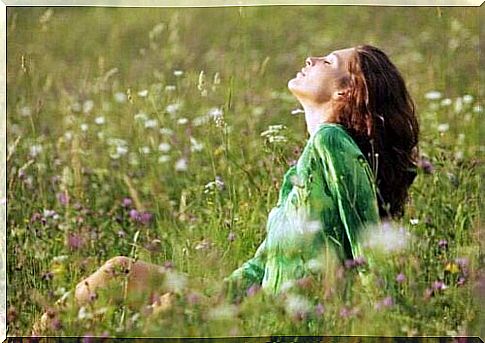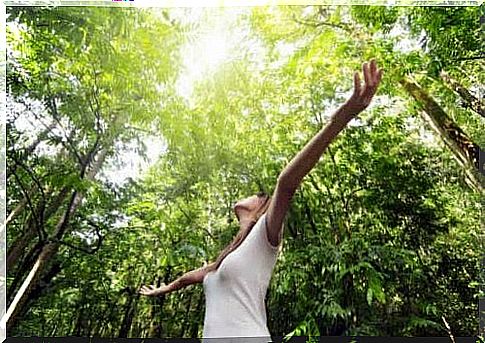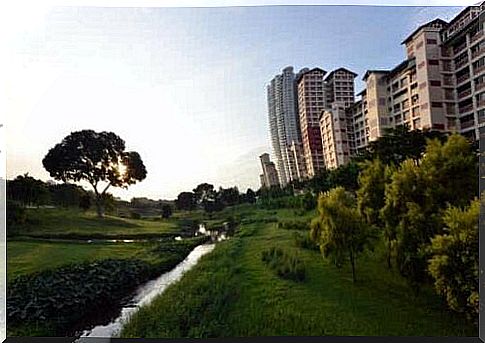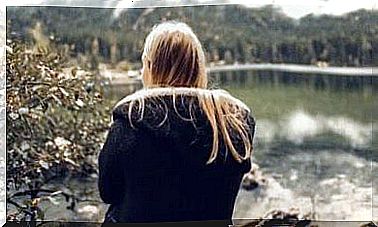What Is The Meaning Of The Term Biophilia?

Biophilia is man’s innate tendency to want to get close to nature and feel in line with it. The first person to use this term was the philosopher and psychoanalyst Erich Fromm in 1973. Later published Edward Osborne Wilson a book called Biophilia ( Biofili ) .
From an etymological point of view, biophilia is a word composed of two Latin roots: bio, which means “life”, and filios, which is translated as “natural inclination, affection or friendship”. Wilson defined it as the ability to admire the life around us.
An important aspect of what we have mentioned so far is that biophilia is deeply rooted in us. We can say that it is “innate” for humans. We are not talking about environmentalists or green activists, but rather about a tendency we are born with to love nature.

What is biophilia?
The theory of biophilia, mainly explained by Edward Wilson, points out that humans were closely related to nature. They experienced a natural need to be in contact with other living beings, and this was innate.
From this perspective, getting in touch with other living beings is as important as interacting with other people. Therefore, people have a special feeling of balance and peace when they walk in a forest, by the sea or spend time with their pets.
This tendency is present in human genes. You could say that people have a type of “coding” that makes them feel attraction, curiosity and interest in everything that has life. That is why Wilson says that man should not only be defined as a “social animal”, but as a “social and natural animal”.
Biophilia: Nature and well-being
Experts conducted a study in the Netherlands with more than 300,000 adults and children. The purpose was to identify the effect of contact with nature on daily life. The results of the study were published in the Journal of Epidemiology and Community Health .
The study concluded that people who live near green areas have fewer anxiety and depression problems than those who live in cities. In fact, it found evidence of a lower risk rate for at least 15 diseases, including heart disease, diabetes, muscle aches, migraines and asthma.
We would also like to highlight another study entitled ” The health benefits of gardens in hospitals “, written by psychologist Roger Ulrich. He showed that patients who have undergone an operation recover faster and need fewer painkillers if they can see a green landscape from the window.
The same report also suggested that looking at vegetation has a huge impact on our health. It can reduce heart rate, blood pressure and changes in the sympathetic nervous system.
Biourbanism
Many large cities have done nothing but steal space from nature to build large masses of concrete, gray streets and dark buildings. In many of these cities, the only hint of nature is in small green spaces and parks. In addition, they are not always close to residential complexes.
Cities establish a distinction between people and their natural surroundings. Thus, contact with nature has been reduced to our experiences as tourists, for the most part, and is often not part of everyday life.
Several cities have become aware of this, creating new models and styles of urbanism where nature is again the central part.
The country at the top of this new model is Singapore. In many of their cities, they have built networks with an uninterrupted flow between parks and green areas. Many birds, insects and other animals have gradually begun to enter these areas.

Cultures and new paradigms
Biophilia was at the forefront of ancient cultures, and it is now also present in several non-Western cultures. For most of the surviving indigenous peoples, contact with nature is unquestionable. They do not need theories to keep this love of nature present and alive.
Beyond nature conservation or ecological movements, it may be best to look into yourself. There, perhaps hidden, you will find the “social and natural animal” that is not entirely comfortable with being prevented from having fluid contact with other living beings. Maybe it’s time to start changing this paradigm.









